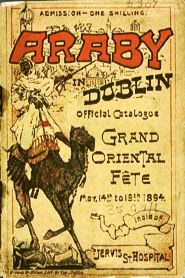A few last things to finish up the semester:
Remember, your “Araby Project” is due Tuesday, December 5, by noon. Just slide it under my office door at HUM 553 by the deadline (along with any other work you may need to surrender).
As you may have heard, SF State administration has chosen to terminate about 150 instructors for Spring 2024. This means that several hundred class sections will be missing from the Spring 2024 schedule. Some colleagues have put together this (anonymous) survey to gauge how these massive cuts will affect students. If you get a moment, please visit the survey here.
I will be on strike on Tuesday, December 5. I invite you to participate in the festivities at 19th and Holloway.
Comrades, I have so much enjoyed our time together every Tuesday afternoon. You are a wonderful bunch of students and human beings! Venceremos!


